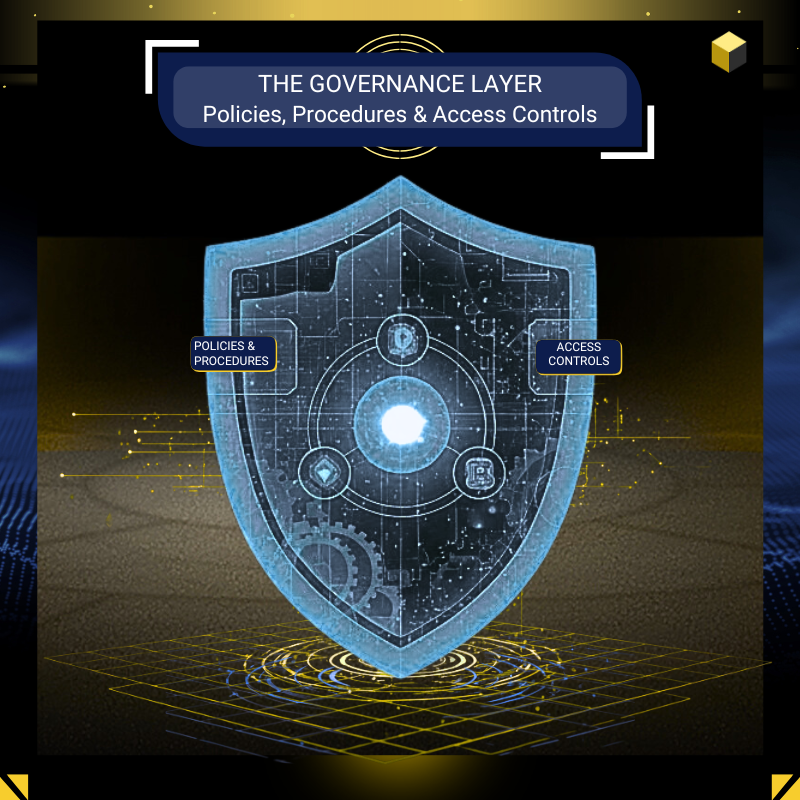For the CFO, the strategic promise inherent to digital assets, like enhanced efficiency, streamlined settlement, and new avenues for growth, can only be realized once a single, foundational mandate is met: establishing absolute control.
In the on-chain economy, where transactions are immutable and bearer assets are the norm, robust governance is not a bureaucratic hurdle; it is the bedrock for digital asset treasury fundamentals. It is the framework that transforms technological potential into institutional reality. Without it, even the most promising strategy is subject to unacceptable operational and financial risk. The greatest threats in this space are not failures of technology, but failures of human process and oversight.
This post is your playbook to a clear, institutional-grade framework for digital asset governance and compliance. It is a guide for building a resilient treasury, ensuring a clean audit, and empowering you to lead your organization with confidence in the new digital landscape.
Get the Definitive CFO’s Playbook
You’re reading the article. Now, get the entire 60-page framework it’s based on. This is the definitive guide to digital asset governance, compliance, and control.
- Learn the framework to Ensure Confident Compliance
- Get the templates to Architect Your Systems
- Turn your treasury from a cost center into a Strategic Asset
The First Line of Defense: Building Internal Capability
Forget the wallets and the wire transfers for a moment. The true launchpad for your digital asset strategy is your people. Before a single dollar is allocated, the most important investment you can make is equipping your finance team with the expertise and confidence required to transform your treasury from a cost center into a strategic asset.
Compliant digital asset governance demands your team master these core principles:
- Wallet & Key Management: The critical difference between public and private keys, the function of a seed phrase, and the security implications inherent with different wallet types.
- Transaction Finality: Decentralized ledger technology (DLT) and blockchain-based transactions, where there is no intermediary to reverse an error.
- On-Chain vs. Off-Chain Records: How to reconcile data from DLTs with your internal accounting systems.
Investing in structured education ensures that your team operates from a shared understanding of both the risks and the procedures designed to mitigate them, reducing the likelihood of human error: the single greatest risk factor in digital asset operations.
The Governance Layer: Policies, Procedures & Access Controls
With an educated and skilled team in place, the next step is to construct the formal governance layer. This is not a single document, but a living system of policies and procedures that dictates every aspect of your firm’s interaction with digital assets.
The cornerstone of this layer is a robust Wallet Management System (WMS). This is your centralized command center for all digital asset activity, formally documenting:
- Purpose-Driven Wallets: A strict policy of segregating assets into different wallets for different functions (e.g., receiving payments, making payments, long-term storage). This minimizes risk and dramatically simplifies accounting.
- Access Control Policies: A clear hierarchy of who is authorized to initiate, approve, and execute transactions from corporate wallets.
- Secure Key Storage: An ironclad, offline protocol for storing and backing up all private keys and seed phrases, with access restricted to a small number of authorized personnel.
To enforce these policies, institutions must move beyond simple password protection and implement advanced security protocols. Multi-signature (multisig) or multi-party computation (MPC) wallets are the institutional standard. These technologies require multiple, independent approvals before any transaction can be executed, creating a powerful system of checks and balances that is algorithmically enforced.

The Fiduciary Mandate: The Corporate Custody Program
How and where your firm’s digital assets are held is one of the most critical fiduciary decisions you will make. Your Corporate Custody Program must be a deliberate choice based on your organization’s risk tolerance, technical expertise, and regulatory requirements.
The two primary models are:
- Self-Custody: Your firm directly manages its own private keys using hardware or software wallets. This offers maximum control but requires significant in-house technical expertise and rigorous security practices.
- Third-Party Custody: A qualified custodian (such as a specialized crypto firm or a bank) holds and manages the assets on your behalf. This can simplify operations and transfer some security burdens, but it requires deep due diligence and reliance on a third party.
The right choice is not universal; it is specific to your firm. It requires a formal evaluation of the trade-offs between control, cost, convenience, and counterparty risk.
The Operational Layer: A Framework for the Compliant Close
Strong governance culminates in a reliable and auditable financial close. The unique nature of digital asset transactions requires a specialized process to ensure data integrity and compliance.
Our 7-Step Framework for a Compliant Close provides a clear, repeatable process for your accounting team:
- Craft a Compliant System: Establish the foundational accounting policies that align with new standards like ASU 2023-08.
- Determine Asset Eligibility: Properly classify all digital assets based on their technical characteristics.
- Evaluate & Categorize Transactions: Analyze every transaction to assign the correct accounting treatment.
- Update Your Cost Basis Tracker: Meticulously track the cost basis of each asset for accurate gain/loss calculation.
- Integrate & Synchronize Ledgers: Ensure seamless data flow between your on-chain sources and your general ledger.
- Reconcile & Close Crypto Activity: Perform regular reconciliations of all wallet and exchange activity.
- Review, Support & Prepare Reports: Generate accurate, well-supported reports for financial statements and tax filings.
This structured approach transforms the complex task of a digital asset close into a manageable, auditable, and compliant process.
A sound governance framework is the essential playbook for building a resilient, strategic, and future-proof treasury. It provides the confidence you need to seize the opportunities of the on-chain economy while protecting your organization from its risks.
This article outlines the core pillars of effective governance. For a deep dive into the specific policies, procedures, and controls you need to implement, download our comprehensive white paper.

